I’d always imagined myself touring the Li River at sunrise. In my head was a picture of me, rafting through the mist that hugged the cliffs that rose from the banks while a cold, purplish blue light covered the scene. That picture, for the longest time, had been framed and nailed to the walls of my mind. If I would ever find myself in Guilin, that scene would have to happen. River. Cliffs. Dawn. Perfection. It had to happen.
But I am not a morning person. Absolutely not a morning person.
So when I was asked what time I wanted to see the river, I foolishly and nonchalantly picked a twisted number that rhymes with hate. “Eight o’clock, it is,” said the confused hotel receptionist, who looked at me judgingly. “I thought you said the earlier the better?”
I did say that. But that was before I had tried getting swallowed by their beds. After almost a full day of being on my feet on the train to Guilin from Zhangjiajie, I wanted to marry the first mattress I’d see and spend the rest of my life in its soft, comfortable embrace. I was intent on making sure that the aching temple of my soul would have the rest it deserved.
Yangdi Village
So there I was, basking in the harsh mid-morning sun in the quaint village of Yangdi. Some time during the 90-minute bus ride, our guide explained what to expect from the tour. He spoke English but I still could not understand anything, partly because I was on the far end of the bus and partly because the guide was just difficult to understand. The only bit of information I was able to pick up was that one of the views that awaited us was depicted on the 20-yuan note.
When we reached the village, we were greeted by a soft blow of a crisp, cool wind, as if ushering us to the river. We walked down a concrete, waterward street that ended at a wharf where dozens of motorized bamboo rafts were docked. The rafts followed the traditional design, with its front end slightly skewed upward. When I hopped onto one, I knew instantly that they were not really made of bamboo but probably painted PVC pipes. Each could accommodate up to six passengers (not including the boatman), but there were only four of us at the time. I sat in the rear row, put on a life vest, and heard the roar of the engine drown the gentle splashes of the river, signaling the start of our journey.
The day could not get any clearer: no mist to block the view and no clouds to block the sun. The raft had a roof, but the sides and the front were wide open for a full, unobstructed vista. That is, until a cruise ship overtook, building a great wall between us and the cliffs.
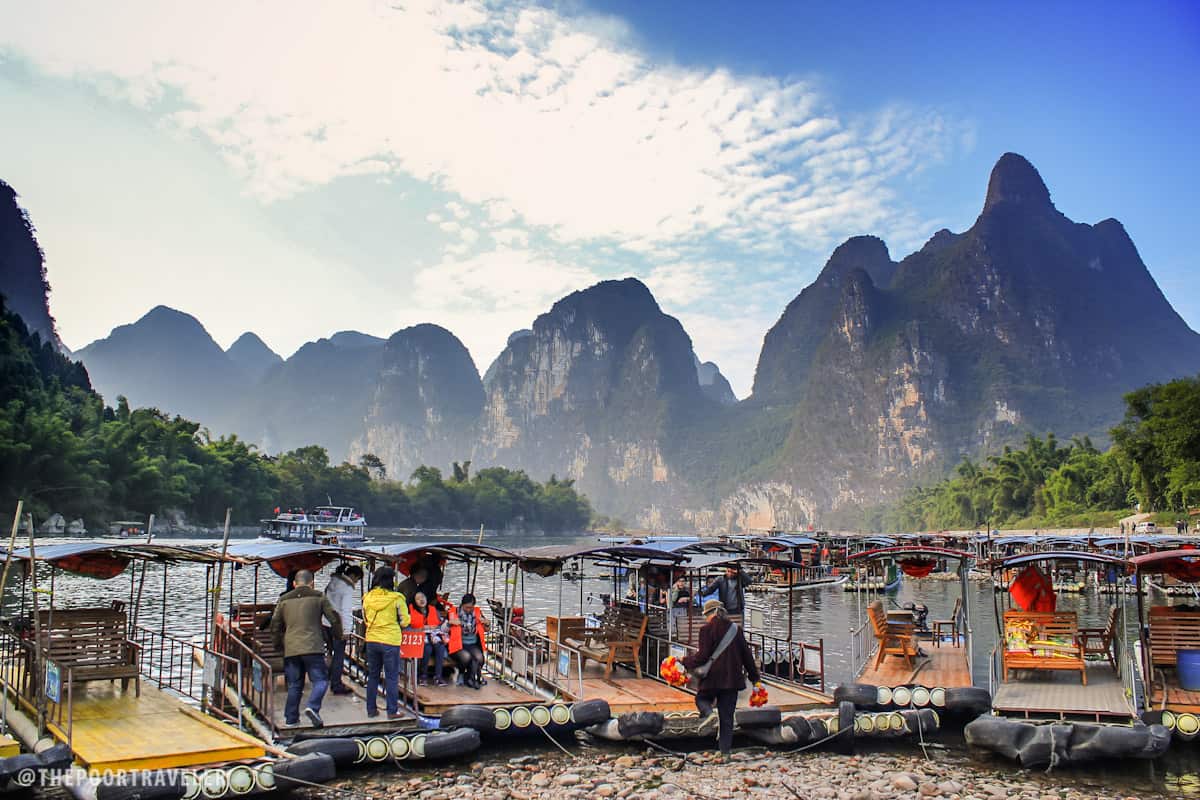
Li River
Seeing the famed Li River can be done in three ways: on a raft, on a cruise, or on foot. Hiking is a great option for the fit, adventurous traveler. The trek from Yangdi to Xingping, about 22 kilometers, takes four to five hours. The trail is pretty straightforward and never strays too far from the river. It’s free and you have full control of everything.
You also have good control of your time when rafting. You can ask the boatman to stop at any point along the way, something that I did when I spotted tents lined up on a flat area of the river and other tourists roaming about. I hopped off of the raft to find nothing really, just a few vendors and a man with a cormorant bird enticing people to have photos taken with him. Upon dawning on me that we stopped for nothing, I did a 180 and was surprised by an assemblage of peaks that towered before me, begging for an endless succession of snaps. This is probably one of the sites that I needed to watch out for. They probably formed an image that was worth noting. But with no guide or local in tow and bereft of imagination, I probably missed out on something wonderful there.
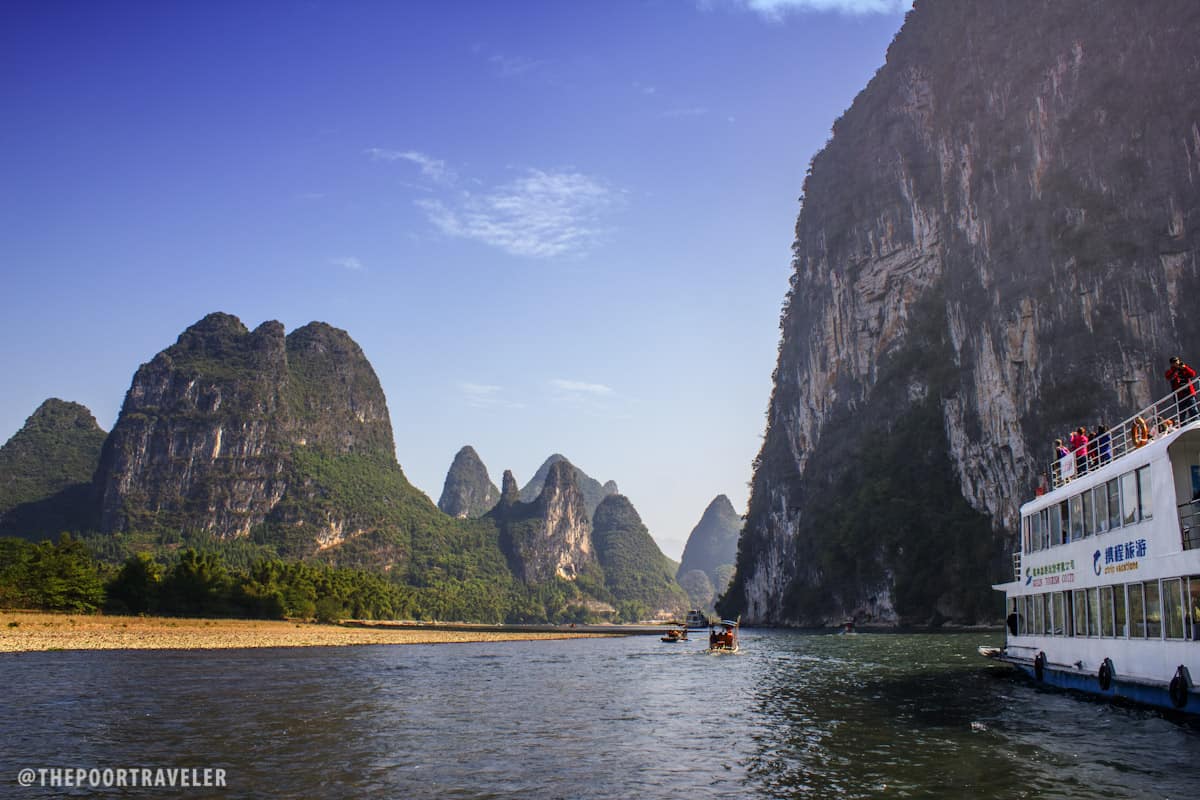
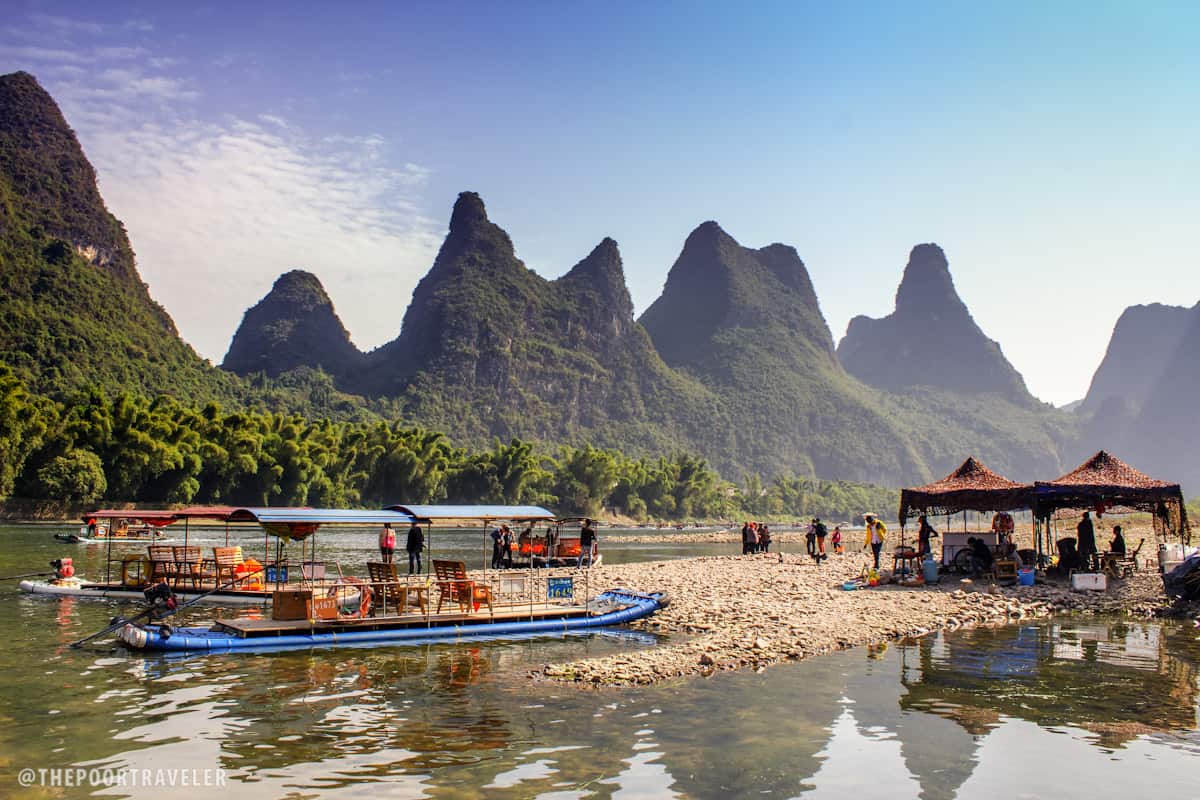
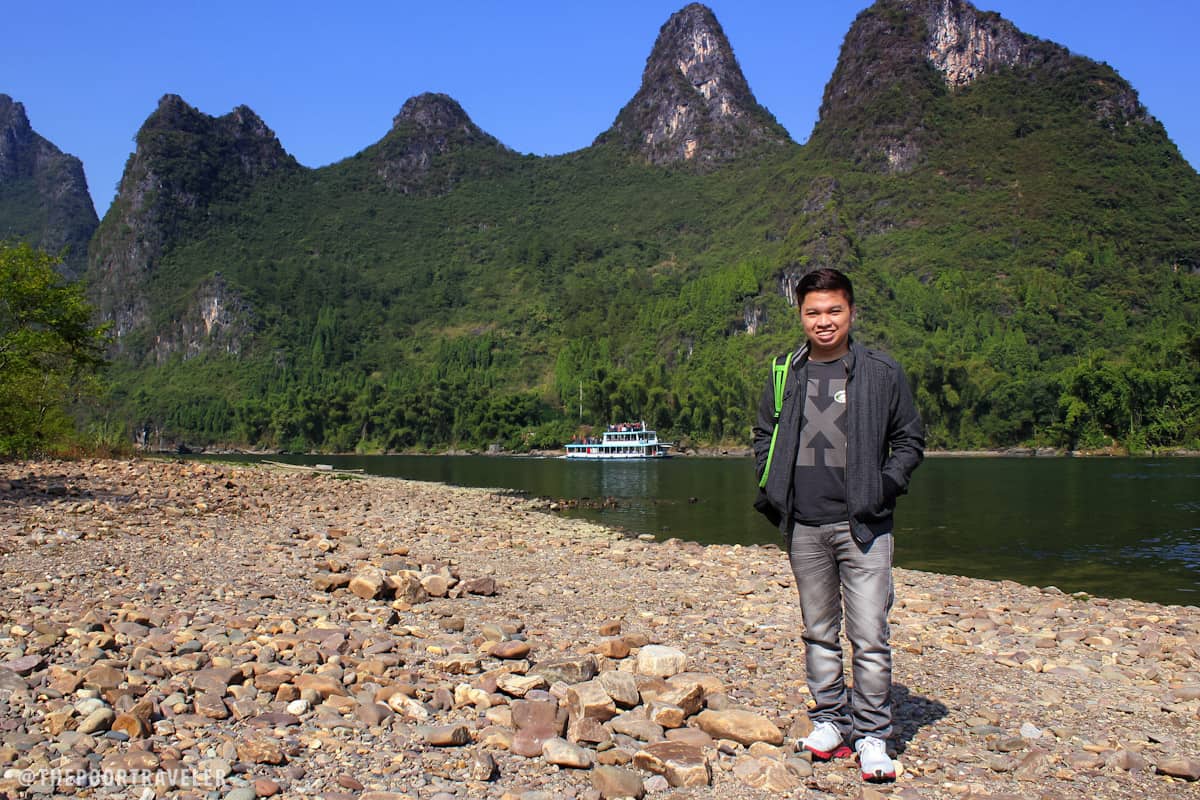
Which is probably why the river cruiser makes sense to some people. Not only are they comfortable, they are also the only suitable option during summer and winter as they protect tourists from heavy downpours and biting cold. And they have restrooms, which is an essential for a four- to five-hour trip.
Xingping Village
Traffic soon built up, and more and more rafts came into view. I looked back and my eyes met a trio of peaks standing close to each other. Together they form an image that became familiar to anyone spending time in China: the scene on the 20-yuan bill. I fished one from my wallet and, as though paying tribute to the place, raised it to match the actual mountains.
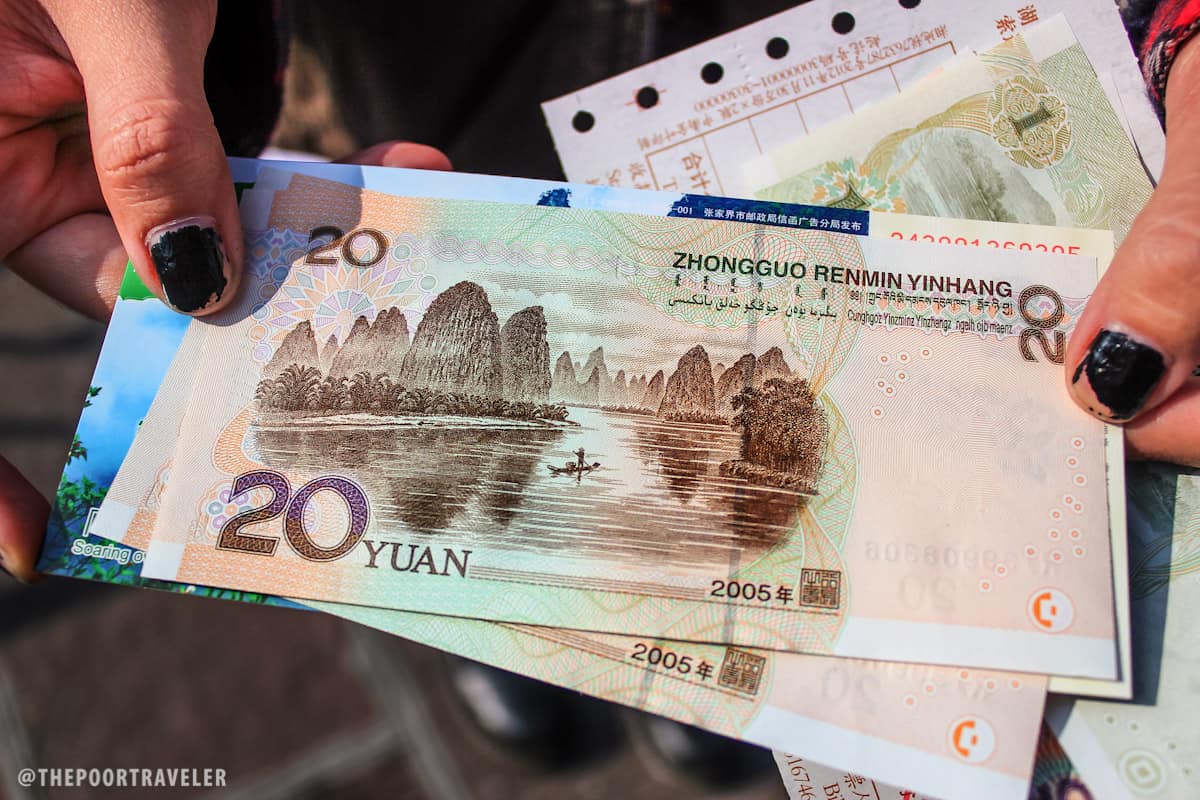
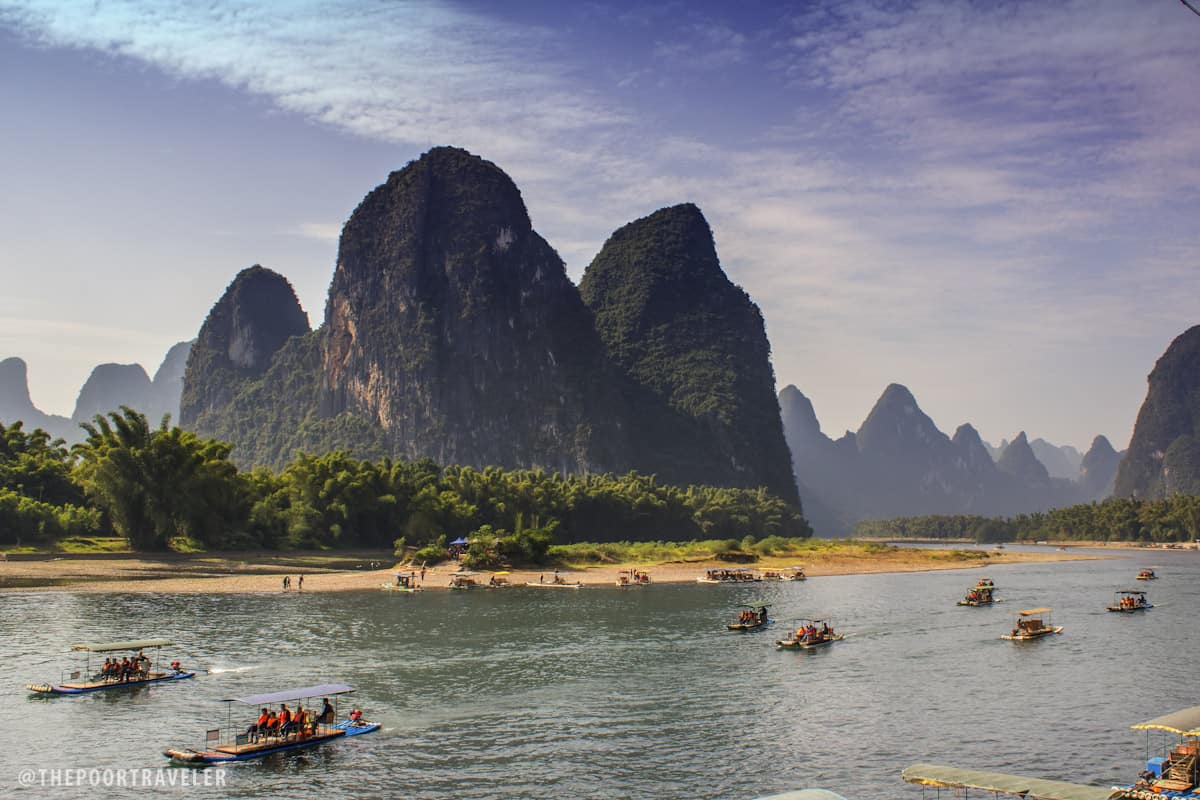
When we disembarked, everyone on our tour gathered near an extended platform, a much better vantage point for the 20-yuan bill scene. From here, we went straight to the bus, which will take us to Yangshuo, a small town that has become synonymous with tourism in this part of the world. As we searched for our ride, I had a good look of the surroundings. While many dismiss Xingping as the James Marsden of Chinese tourist stops — you know, a means to an end — it actually has its own charm if you pay attention (yeah, like James Marsden). The most cinematic parts of Li River’s karst landscape are actually here in Xingping, and its streets are flanked by historic buildings.
Yangshuo
If the tour were an intercourse, Xingping would be the orgasm and Yangshuo the aftersex cuddle. (Yes, I said it.) Yangshuo is where people doing the Li River tour are most likely to end up in, regardless of where and how they started. Those who took the river cruise from Zhujiang will find themselves sharing the room with those who hiked and rafted from Yangdi, most likely in one of the town’s many restaurants, fastfoods, bars or cafes.
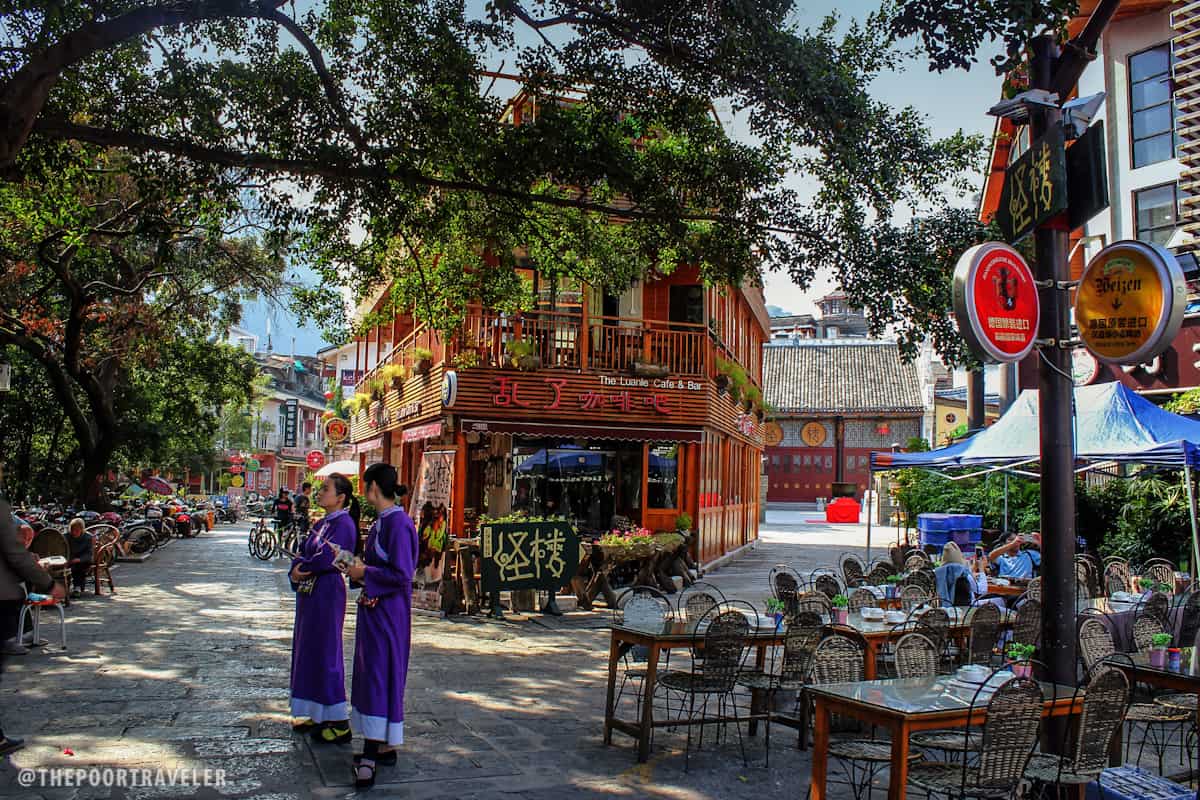
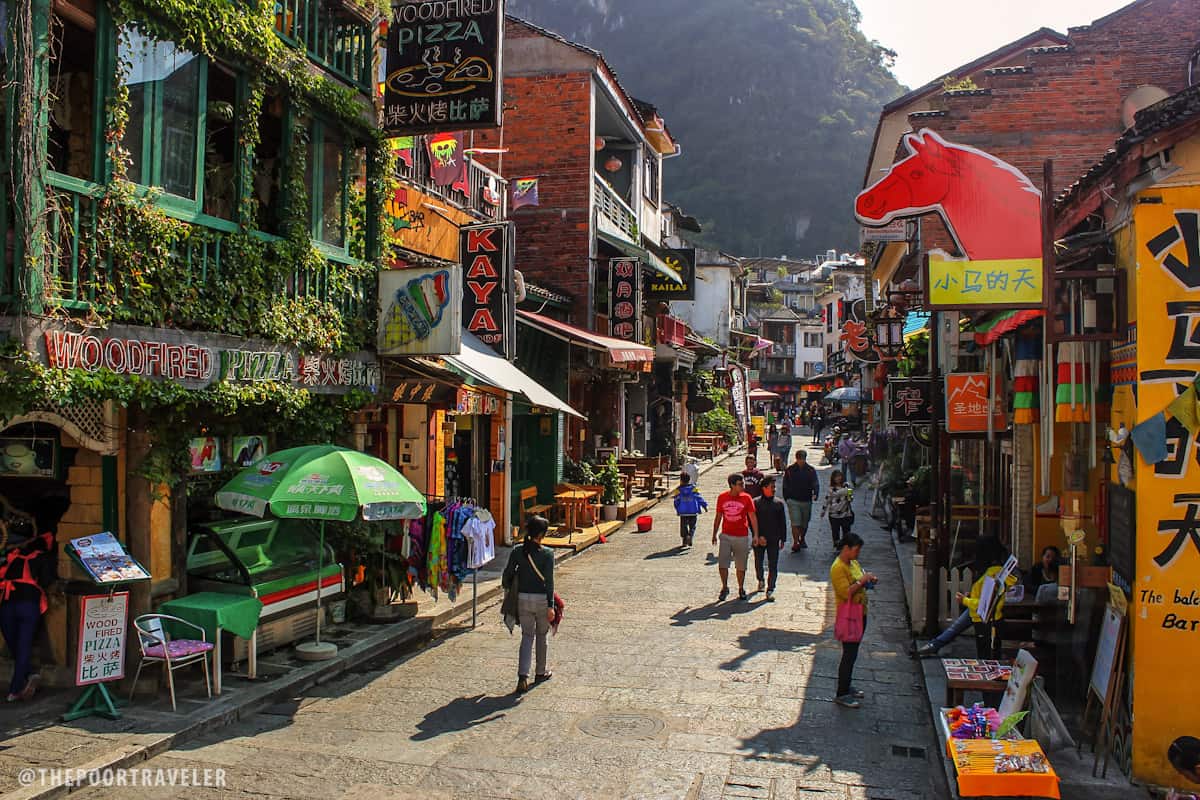
While some would say that the town’s authenticity has been lost on its way to becoming what it is — an (over)developed tourist town — there is still something so charming about it. The town center is hypercommercialized, but the countryside is still worthy of a visit. Rock climbing is a popular activity among travelers, and if your timing is right, you could raft again peacefully, this time along Yulong River. Countless hotels and hostels offer a wide variety of accommodations, encouraging a much longer stay.
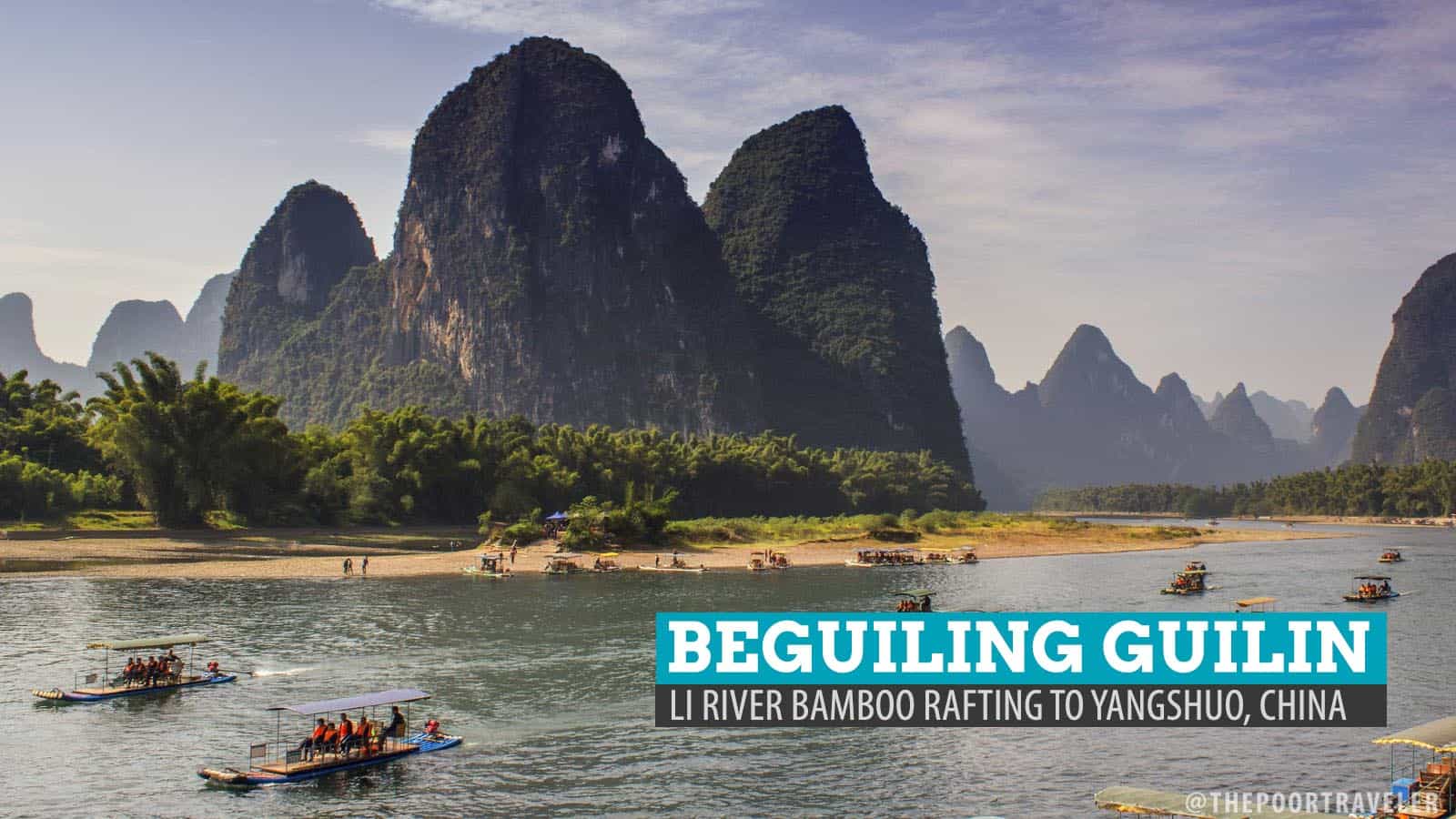























During 2005 :-)